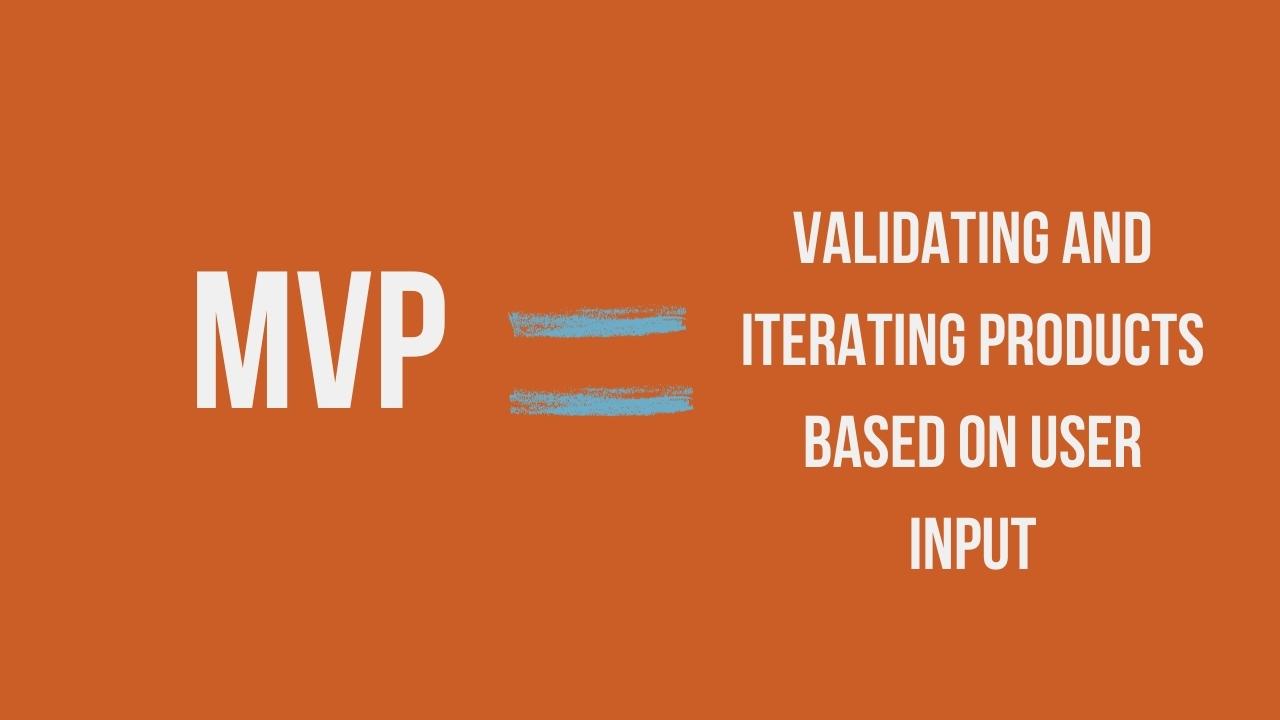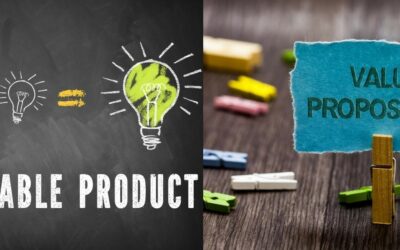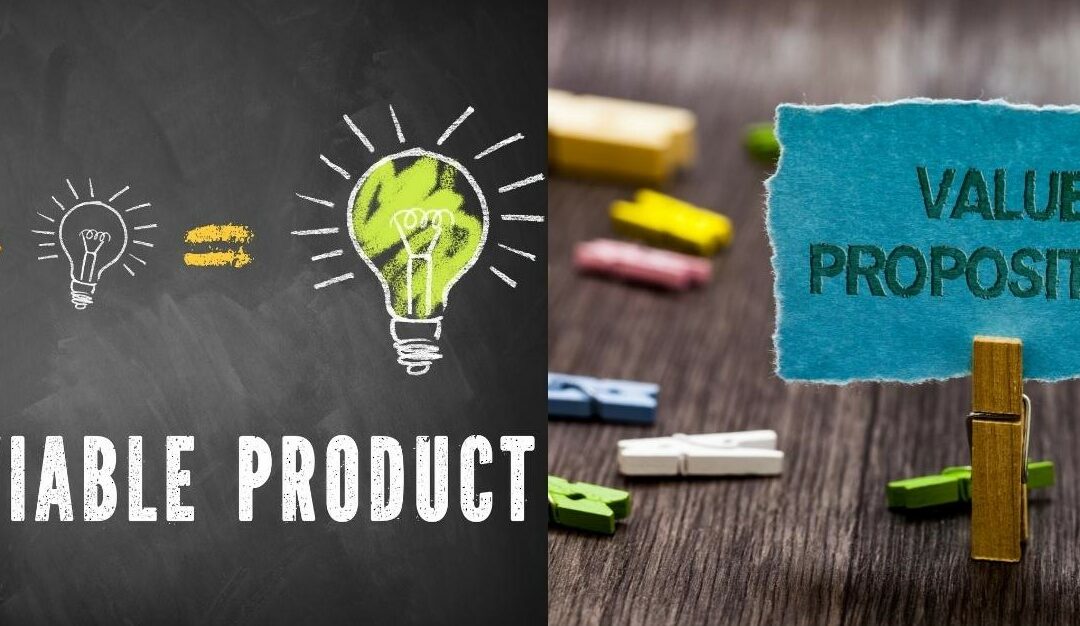Developing the ‘perfect’ product or service takes both time and effort. If you want success in beating out your competitors (for customers, funding, or investors etc.) you have to focus on specific elements of what you are offering that will have a significantly positive impact on potential customers. This is especially important for digital and tech/enabled SMEs (small to medium enterprises). Perhaps you have started to hear the term Minimum Viable Product (MVP) more frequently, or maybe you have been asked for your Minimum Viable Product by a potential funder. Whatever has piqued your interest on the topic we invite you to gather more information about developing an MVP by reading on.

What is an MVP and why do I need one?
A good MVP allows you to test a basic version of your product, which is less financially risky and time consuming than investing in the full version of a new product or service right away. At this stage you can conduct research on your customers needs, plan a strategy for introducing your product to the market and find the essential features and the core functionality required to develop your product. There are many examples of successful companies that were first designed as an MVP. Some digital products that were designed as MVP first are Facebook, Zappos, Instagram, Spotify, and Dropbox.
A minimum viable product, or MVP, is a very early-stage version of a product or service with sufficient elements to attract early-adopter customers and validate a product idea early in the product development cycle. In tech and software industries for example, the MVP helps the product developer in receiving user feedback quickly, so that it can be used to pivot and improve the product as needed. The MVP is a concept that allows businesses to discover whether the basic version of a product with core features meets users’ needs. In other words, it checks how early customers respond to the product value proposition.

An MVP is a kind of experiment or test, but one that any business can conduct! Many start-ups begin with developing an MVP so that they can determine whether their product idea can succeed on the market. Although the process of developing an MVP will look different for every company, each will allow a company to collect customer observations, opinions and feedback regarding the core functionality of their product or service. This helps the company to pivot and tweak their product, and create new iterations as needed.
The minimum viable product is the basic version of a new product that can gather the greatest validation of customer needs and problems to be solved, and product desirability with minimum costs.
A minimum viable product is a basic version of a company’s product and will only have the basic characteristics of the final product. For example, if you are developing an MVP for a new app, you will include its core value, workability, usability and visual appeal. Every feature of the app would not be needed, as you would only want to include the core value of the app. This is the same approach to developing an MVP for any product. If you were developing an MVP for a new website, you would only need the landing page to gather customer feedback.
Learn more about MVPs here:
Prototype Thinking Labs Example User Test
Minimum Viable Product and Pivoting: Crash Course Business Entrepreneurship #6
A Step-by-Step Guide to Build a Minimum Viable Product (MVP)
What is an MVP?
How To Identify Minimum Viable Product Or MVP? | #8
MVP Design Hacks: transform your hot idea into a validated prototype
Process of Minimum Viable Product Development
Minimum Viable Product development is a very beneficial process, if done correctly and effectively. Most importantly, you need to go through the process one step at a time, but as frequently as you like until you are receiving consistent feedback from potential customers. Building an MVP requires research, prototyping, designing, and developing, and different iterations of your product. The length of time this process takes will depend on your product and MVP strategy.

Step 1. Measure
After identifying your business objectives and market, user research can assist you in identifying your minimum viable product’s core customers and better communicate their pain points. Using both customer interviews and secondary market research, you can build a user persona which you can utilise throughout the MVP development process.
You can use interviews to gain a deeper understanding of your customers behaviours, motivations, and needs. This way you can understand what your customers want and needs when they look for similar products or services. In conjunction with a strong analysis of the market and your competitors, conducting customer interviews during the product development process ensures your MVP can meet the needs of the correct audience. It is recommended that you meet with 12-24 potential customers to gain their feedback before moving to the next step. For each interview you do, ask your potential customer for a referral to another potential customer so that you continue to gather multiple viewpoints.
Step 2. Learn
To learn as much as you can about your potential product users you should try to understand their pains, in order to build the best solutions for those needs. Observations and interviews help you gain insight into customers’ challenges and can expose how a user’s physical and emotional environments shape their experiences of those challenges. They can also offer insights that help you design and create prototypes and MVPs.
Step 3. Research
Using lessons learned from interviews and other research, you can identify specific customer pain points and begin to ideate possible solutions. At this point you can begin to create a customer journey map by using a) information from your interviews and/or b) asking customers to track their actions related to a specific unmet need over time.
Understanding the customer journey can help you identify present pain points and how customers are addressing them. Understanding the customer journey can also provide insight on how a customer’s attitudes towards a product or service changes over time. This can help with consideration of future iterations of your product.
This process can also provide information leading to opportunities for innovation, as mapping the customer journey can unearth new opportunities. It can also provide insight into what makes a product compelling to your user. The features of your product itself might be the best draw, but considerations surrounding instructions, packaging, pricing, or customer service may all play important roles as well.
Mapping customers’ journeys helps you and your team identify and understand critical pain points to build solutions for. By focussing on mapping the customer journey you can focus on how to offer real value to customers based on what they have identified as important, and you can begin prioritizing developing your products with the goal of offering this value.
Step 4. Prioritise
During the previous steps you should have created a list of what customers have identified as their greatest needs. This is the information you require to start developing your MVP; however, you may have identified more needs than you can address. At this point it is imperative that you focus on the form and features that are absolutely essential for validating your specific product. The additional ideas identified can be saved for the 2nd, or 3rd (or 4th) iterations of your product. Focus on the value that you can provide in the time that you have available. Prioritising your user needs and hypotheses can help you decide which value and features are critical for your MVP.
You should create an MVP strategy that will reduce business, technical, consumer and financial risk early on. The availability of your time and budget can be very useful in defining your minimum viable product, so before going to market you want to test and solve for your riskiest assumptions. You can do this by building prototypes, that work and look like your final product, but with the most basic functions that require testing. This will lay the groundwork for launching an MVP which has clear performance metrics and customer acquisition information which are easy to assess.
Step 5. Evaluate
You want to create an MVP which can evaluate the success of your product with the problem that it solves for. You want to discover which of your product assumptions are accurate, and you can do this through product and usability testing.
Before conducting your prototype tests, you will want to establish a robust testing infrastructure. To identify where your MVP is succeeding, or new customer needs that require solving, there are an array of testing options that can be used. You can track sales, or track your customer journey through follow-up interviews, surveys, and usability tests to name but a few. During this process you will be able to prioritise your product features and offerings which should be included in the next iteration of your product.
Find an MVP Canvas on these Websites:
The MVP Canvas
The MVP Experiment Canvas
To Summarise – How will an MVP Help Me?
There are many benefits to creating an MVP before launching a final product. It helps you to:
| Understand what the market needs | Enter the market with a small budget |
| Test the viability of your product with minimal expense | Find the right audience for your product |
| Minimize your risk of failure | Minimize errors |
| Save time and money in development | Collect a maximum amount of quality feedback |
Find more excellent examples of successful MVPs here:
3 Awesome Minimum Viable Products
13 Types of Minimum Viable Product (MVP): Wizard of Oz, Concierge, One Painkiller and 10 more



